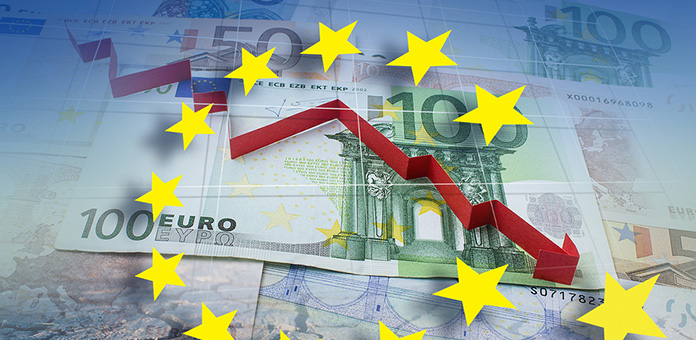
The horrors of two devastating world wars motivated the nations of Europe to seek a lasting form of peace. The result, based on several treaties and interim organizations, was the European Union, which totaled 15 nations by 1995. On January 1, 1999, these nations migrated to a newly created currency, the euro. 1 Today, many analysts assert that the EU is on the verge of collapsing and taking its fiat currency down with it. Historically, gold has shined during such times of economic and political turmoil.
Financial Crisis
This grand experiment has not been without significant strains and disputes, and there are many existential issues facing the EU today. At the heart of the dynamics that resulted in the first major fracture, the Brexit referendum last summer, are many serious and growing financial issues and liabilities. In fact, while it has been overshadowed by the recent U.S. news, a growing community of observers is concerned. This body of economists and analysts fear the UK’s departure was a foreshock of a much greater rift to come, largely driven by pending financial crises.
The recent history of the EU is replete with instances of financial meltdown and near economic collapse. Each of the “PIGS” (Portugal, Italy, Greece, Spain) have required bailouts of one form or the other, and these countries still represent various levels of threat to the euro and the entire EU. 2
European Central Bank Driving Debt
The currency of the EU, the euro, is itself part of the global paper money experiment that has been underway since the ‘50s. Freed of any precious metal backing requirements, the governments of the world, including the U.S., have engaged in an unprecedented exercise of governmental hubris. These nations continue to use their central banks to issue gargantuan levels of debt and cover ongoing and growing deficit spending.
The ongoing Greek crisis is an example of the long-term consequences of such practices. Not only is Greece essentially bankrupt, the citizens of the nation now act as if it is the duty of the rest of the EU to support its egregious attitudes toward entitlements and deficit spending. This attitude is cropping up in numerous other EU nations, and it represents a real danger to the EU’s stability.
Another example is noted in what is called the “socialization of risk” created by these central banks. With no democratic approvals or votes and with little press coverage, the EU and its nations are stealthily assuming trillions of dollars of debt from private banks and institutions. While they are doing so to stave off current collapses, many indicate this is just putting off a much more catastrophic financial collapse.
Grim Expert Predictions
These are not extremists or alarmists who are crying out about the impending collapse. Otmar Issing, considered by many to be the “Father of the Euro,” stated in a recent interview with Central Banking that the European Central Bank is so overextended that “one day, the house of cards will collapse.” 3 As recently as 2012 Professor Issing felt that kicking out countries like Greece could save the EU. He now feels there is no hope, and the day will soon come when any additional shocks to the EU could cause its collapse. Unfortunately, there are many such potential rifts looming large. 4
Additionally, just last week the former head of the U.S. Fed, Alan Greenspan, warned that the euro is on the verge of collapse. Speaking to Gold Investor magazine, Greenspan noted that many investors are moving to gold over fears of an imminent collapse.
A Return to the Gold Standard?
This warning underscores that simple fact that if the euro does collapse, gold will be the big winner from a price perspective. This is not only because it is the ideal safe haven investment but also the probability that some nations may return to a gold standard currency. The collapse of the euro would end the so-called Schengen Area, in which 26 different European nations enjoy free trade and movement.
While no one wants to see the financial carnage the euro’s collapse would bring, many think it is the only way to spur new European growth and solve this currently “unsolvable problem.” For those who have gold in their portfolios, there are forecasts that gold prices could rise by several hundred to even a few thousand dollars. 5

